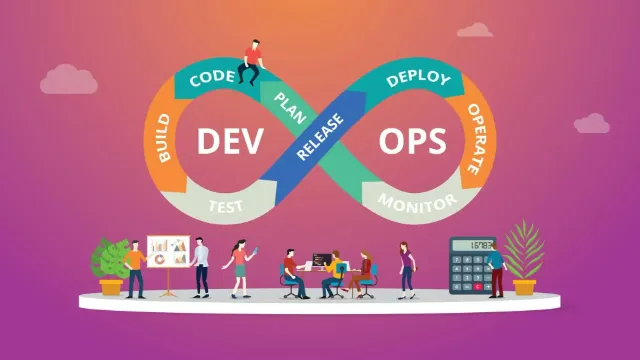Guide to Performance Optimization in Software Development

In today’s world, performance optimization in software development has shifted from being an optional perk to a compulsory add-on. Slow and unresponsive software is no longer encouraged by both companies and users. Because even a millisecond delay results in losing potential customers and money.
So, the need to prioritize performance is getting bigger every day!
The prime purpose of this endeavor is to improve the application’s speed, responsiveness, and overall user experience. Nonetheless, it seems like a heavy upfront investment of time and resources, but the benefits are multifold and help in the long run. Know more such facts and insights by reading this blog till the end!
What is performance optimization in software development?
Software performance optimization refers to the process of adjusting a software system in order to make it purposeful, upgrade its operational speed, and facilitate its improved functionality. It uses different tools and methods to improve the productivity of data processing and analysis.
Other features include optimizing data storage and retrieval, query execution, data transformation, indexing, caching, parallel processing, and resource allocation. This emphasizes monitoring only a few system performance-related parameters, such as execution time, memory usage, and bandwidth.
However, this often comes with a sacrifice of only one feature for another. For example, running time is improved by enhancing memory consumption, but on the other hand, this results in high memory consumption. Therefore, with the definition readily available, let us look at the levels of performance optimization in software development.
Also Read: 7 software development trends
What are the levels of performance optimization?
Were you aware that the user experience and ease of use have enabled an average conversion rate for online shopping to rise to 2.13%? At the heart of performance optimization in software development is increasing performance on acceptable levels to have a glimpse of all probable results before launching the product. They are:
Algorithmic Optimization
At this point, the software tries to refine the algorithms for better results. It involves analysis and optimization of logic and data structures so as to minimize the execution time and space complexity. Improvements in algorithms and better processes can bring about a lot of improvements regarding better performance, resulting in overall cost savings.
Code-Level Optimization
In this case, optimization is designed to make the code better implemented. It covers loop unrolling, cache optimization, reducing function calls, and low-level optimizations such as assembler inline or compiler-specific optimization. Code-level optimization is aimed at the relatively high operation speed and, therefore, efficiency of its execution.
System-Level Optimization
At this stage level of performance optimization in software development, it is regarded as optimizing the software interaction with the underlying systems and hardware. This includes load balancing, parallelism, optimization methodologies, and memory management strategies. System-level optimization can lead to the improvement of various aspects within the organization.
On the other hand, it is important to notice that this level of optimization could be software-certain and only because of rigid demands for its work. This means that optimization efforts should be based on real causes of low performance instead of trial-and-error applications.
Performance optimization in software development: Steps
If you are searching for process improvement software development to develop user experience strategies, follow this step-by-step guide and develop one for your digital products:
Profile and benchmark your code
Profiling includes examining the application’s performance to detect latency areas. On the other hand, benchmarking measures the performance of code concerning your predefined set of metrics and can include identifying memory leaks, excessive consumption of CPU time, etc. It makes it easy to track the areas underperforming.
Testing and debugging
Testing and debugging for performance optimization in software development entail identifying issues to resolve them for better performance. Automated testing frameworks ensure that the developers catch bugs and performance bottlenecks at the early stages of the development cycle before it is too late. Tools with static code analysis will also report security issues.
Caching and resource pooling
Another relevant mechanism is called caching which implies keeping often-used data in memory and thus avoiding the process of extracting them from outer sources. This allows developers to work on the response times and throughput. Pooling of resources helps to avert resource crashes and decrease exhaustion links. This makes it more scalable overall and with less effort.
Optimizing database queries
Slow application due to inefficient queries that affect the user experience. Hence, developers can index the data for faster searching and finding or retrieving the required data. Combining them into a single query provides faster access, rather than numerous small queries.
Therefore, these are the steps that companies or individuals can follow to make product performance optimization. However, there is a question – what tools help the developers to put into practice the steps mentioned above? The following section provides an overview of the top tools used in performance optimization in software development.
Also Read: AI-Driven DevOps: 10 Key Impacts on Software Development
Tools for performance optimization in software development
Different applications have different needs & goals, but all of them come under the same testing criteria of performance, load testing, soak testing, stress testing, etc. These tests should be efficiently performed by tools for performance optimization in software development to estimate the product’s output.
Apache JMeter
Apache JMeter is an open-source tool used for load and process improvement in software engineering. It evaluates how well a system handles a specific workload and measures response times and throughput. Additionally, its user-friendly interface supports easy script creation and extensive reporting of any issues.
Browser Stack
In particular, for mobile applications, browser stack is a complete performance testing tool. Under some conditions, testers can check the responsiveness of the mobile app and also its speed and stability. Moreover, it monitors user metrics, e.g., FPS, resource usage rate, ANR, etc, and goes well with multiple frameworks supporting both iOS and Android apps.
Gatling
Another open-source testing tool is Gatling, which helps testers determine the performance and stability of web applications. Its objective is to develop simple test script creation with real-time monitoring and reporting. It has the capability of generating high user loads with few resources. It also seamlessly blends with IDEs in addition to expediting tester work.
BlazeMeter
The name indicates BlazeMeter as an optimization tool for testers on application performance and load testing in the cloud platform. This offers many tracking traffic provisions for infrastructure evaluation, high user loads, and the possibility to build test scenarios using GUI-editor. Secondly, it enables smooth interaction between the members of a team during test running and analysis stages.
Locust
Locust is an open-source load-testing tool developed using Python. It quantifies web application and API performance and scalability. Testers can simulate real traffic and check under different load conditions. Its architecture is highly extensible to allow testing customization and real-time monitoring with easy-to-use settings.
Hence, these are some of the top-notch performance optimization tools in software development. The next section reflects on the features of choosing the appropriate tool.
Also Read: AI-Driven DevOps: 10 Key Impacts on Software Development
How to choose the right tool for performance optimization?
Choosing the correct performance optimization in software development tools is a crucial step that often determines the project’s success. So, selecting such a tool is the major part of the planning phase. Follow this key criterion and make the right decision that satisfies your testing needs:
Ease of use
First, pay attention to its intuitive user interface and ease of use. The software performance optimization tool should have easy setup, run, and monitoring settings. Less time to learn the tool encourages early testing. So, the ideal choice would be an open-source platform supported by the IT community.
Budget-friendly
Many open-source tools dominate licensed platforms with paid packages. While cloud solutions only charge for generating the required load. Using an open-source tool for preparing test scripts and running the test using the cloud would be an affordable yet productive approach.
Promotes scalability
The testing tool must allow the team to scale the tests to simulate the actual application load. They should easily increase the number of users and generate high loads during testing. As a result, it promotes overall process improvement in software development.
Effective result analysis
Select a platform with the capacity to give a detailed analysis of the test results. Moreover, the tool should produce understandable reports based on the performance metrics, such as throughput or response time. This assists in identifying the source of errors and, hence, modifies the framework.
Conclusion
Performance process improvement in software engineering is crucial, as it not only ensures the product is capable but also serves the user experience without any step. Thus, having issues in performance drains not only the company’s huge financial expenses but also its time and resources. Hence, businesses should know that the long run comes with evolving technology, optimization, and maintenance all the way.






